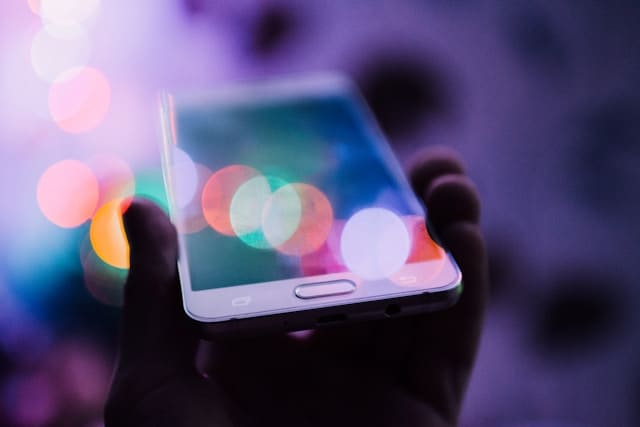
When it comes to buying new smartphone, navigating the vast array of options can be overwhelming. To make an informed decision, it’s essential to consider several key factors. First and foremost, determine your budget range and research phones within that range to avoid overspending. Whether you’re eyeing a budget-friendly option like the Moto phones, a mid-range contender such as the Google Pixel phones / Nothing Phones, or a flagship device like the latest iPhones, understanding the price-to-performance ratio is crucial. Allocate a portion of your budget for essential accessories like cases, screen protectors, and possibly insurance to ensure a comprehensive purchase plan.
Beyond budget considerations, delve into the specifics of the phone’s features and functionalities. Factors such as the operating system, build quality, screen size and quality, camera capabilities, battery life, and processing power all play significant roles in determining the right fit for your needs. Additionally, evaluating network compatibility, security features, connectivity options, and brand reputation can further refine your decision-making process. By carefully weighing these considerations, you can select a mobile phone that aligns with your preferences, lifestyle, and budget, ensuring a satisfying long-term ownership experience.
Let’s Dive into the 20 Key Factors for Your Next Smartphone Purchase:
1. Budget:
Determine your budget range and research phones within that range to avoid overspending. Understand the price-to-performance ratio; often, mid-range phones offer excellent features at a fraction of flagship prices. Allocate a portion of your budget for accessories like cases, screen protectors, and possibly insurance.
Examples: Budget phones (e.g., Moto G Power), mid-range (e.g., Google Pixel 7a), flagship (e.g., iPhone 14 Pro).
Cautions: Higher price doesn’t always mean better for your needs. Research features within your budget.
2. Operating System:
Choose between iOS and Android based on your preferences. iOS offers seamless integration with other Apple products, a highly secure environment, and timely software updates. Android provides more customization options, a wider range of devices at various price points, and access to a broader selection of apps from multiple app stores.
Examples: iOS on iPhone, Android on Samsung Galaxy, Google Pixel.
Cautions: Ensure your preferred apps and services are available and supported on your chosen OS.
3. Build Quality:
Examine the materials used in the phone’s construction. Metal and glass phones often feel premium and sturdy, while plastic phones can be more durable and less prone to damage from drops. Look for features like Corning Gorilla Glass for added screen protection and an IP rating for water and dust resistance.
Examples: iPhone 14 (glass and metal), Samsung Galaxy S23 (Gorilla Glass Victus+).
Cautions: Glass looks premium but is more prone to cracking; consider a sturdy case.
4. Screen Size and Quality:
Consider the display size and technology. Larger screens are ideal for media consumption and multitasking, while smaller screens enhance portability. AMOLED and OLED displays provide vibrant colors and deep blacks, while LCDs are generally less expensive and can be easier on the battery. Look at the resolution (Full HD, Quad HD, 4K) and refresh rate (60Hz, 90Hz, 120Hz) for smoother visuals.
Examples: iPhone 14 Pro Max (6.7-inch, Super Retina XDR), Google Pixel 7 (6.3-inch, OLED).
Cautions: High-resolution screens consume more battery. Ensure brightness is sufficient for outdoor use.
5. Camera Quality:
Look beyond megapixels; examine the camera setup including the number of lenses (wide, ultra-wide, telephoto, macro), aperture size (for low-light performance), and additional features like optical image stabilization (OIS), phase detection autofocus (PDAF), and software enhancements (HDR, AI-based scene detection). Evaluate video recording capabilities, including resolution (4K, 8K) and frame rates.
Examples: Google Pixel 7 (excellent software processing), iPhone 14 Pro (48MP main sensor).
Cautions: More megapixels don’t always mean better quality. Look at sample photos in reviews.
6. Battery Life:
Check the battery capacity (measured in milliampere-hours, mAh) and the phone’s battery management features. Phones with larger batteries (4,000mAh and above) typically last longer. Research real-world usage reviews for insights on battery performance under different conditions, such as heavy gaming or extensive video playback. Fast charging capabilities can also be crucial for quickly replenishing battery life.
Examples: Moto G Power (5000mAh, long-lasting), iPhone 14 Pro (excellent optimization).
Cautions: High-end specs and 5G can drain battery faster. Check for fast charging support.
7. Processor:
The CPU determines the phone’s performance in tasks like gaming, multitasking, and media editing. High-end processors like the Snapdragon 8 series or Apple’s A-series offer superior performance. Consider the GPU (graphics processing unit) for gaming and media. Check the number of cores and clock speed, but also look for real-world performance benchmarks and reviews.
Examples: A16 Bionic (iPhone 14 Pro), Snapdragon 8 Gen 2 (Samsung Galaxy S23).
Cautions: High-end processors consume more power. Consider balanced performance and efficiency.
8. RAM and Storage:
More RAM allows for better multitasking and smoother performance in memory-intensive apps. Standard options range from 4GB to 16GB. For storage, internal storage options (64GB, 128GB, 256GB, etc.) determine how much data you can store. Consider your usage patterns; more storage is essential for heavy media users, gamers, and app collectors. Cloud storage options can supplement lower internal storage.
Examples: OnePlus 11 (8GB RAM, 128GB storage), iPhone 14 (128GB, 256GB, 512GB).
Cautions: Insufficient RAM can slow down the phone. Check if storage is expandable via microSD.
9. Expandable Storage:
Some phones offer microSD card slots for expandable storage, allowing you to increase the storage capacity as needed. This is particularly useful for users who store a lot of media files (photos, videos, music). Check the maximum supported card size (e.g., up to 1TB) and whether the slot is dedicated or shared with a SIM card.
Examples: Samsung Galaxy A53 (microSD up to 1TB), Google Pixel 7 (no expandable storage).
Cautions: Internal storage is faster than microSD. Not all phones support expandable storage.
10. Software Updates:
Regular software updates are crucial for security, new features, and improved performance. Research the manufacturer’s history with updates. Google’s Pixel phones and Apple’s iPhones are known for timely updates. Consider the longevity of software support; flagship models typically receive longer support than budget models.
Examples: Google Pixel phones (regular updates), iPhones (consistent iOS updates).
Cautions: Some brands delay updates. Research the manufacturer’s track record for updates.
11. Design and Ergonomics:
The phone’s design impacts comfort and usability. Consider the weight, thickness, and overall size. Rounded edges and slim profiles generally enhance grip and comfort. The placement of buttons and fingerprint sensors (side, back, under-display) can affect the ease of use. The aesthetic appeal, including color options and finish (matte, glossy), might also be important.
Examples: iPhone 14 (sleek and lightweight), Samsung Galaxy Z Fold 4 (innovative but bulky).
Cautions: Large phones can be difficult to use one-handed. Try holding the phone before buying.
12. Network Compatibility:
Ensure the phone is compatible with your carrier’s necessary bands and technologies (4G LTE, 5G). Dual SIM capability can be advantageous for travelers or individuals managing both work and personal lines. Research carrier compatibility, particularly for unlocked phones, to guarantee full functionality (voice, text, data). 5G provides faster internet speeds and lower latency compared to 4G LTE. Verify that the phone supports the required 5G bands for your region and carrier. Consider whether the additional cost of 5G is justified based on current and anticipated future coverage in your area
Examples: iPhone 14 (supports major carriers worldwide), OnePlus 11 (check specific carrier compatibility), Samsung Galaxy S23 (5G ready), iPhone 14 (5G support).
Cautions: Check carrier websites for compatibility, especially if buying an international model. 5G coverage varies by region. Ensure your carrier supports 5G in your area
13. Security Features:
Security features protect your data and privacy. Biometric options include fingerprint sensors (optical, ultrasonic), facial recognition, and even iris scanners. Software security, such as regular updates and secure enclaves, adds an extra layer of protection. Some phones offer advanced features like hardware-based encryption and secure boot.
Examples: iPhone 14 (Face ID), Samsung Galaxy S23 (in-display fingerprint sensor).
Cautions: Facial recognition can be less secure than fingerprints. Ensure biometric data is stored securely.
14. Connectivity Options:
Connectivity options ensure compatibility with accessories and other devices. Bluetooth 5.0 and above provide better range and stability. NFC is essential for contactless payments and quick device pairing. USB-C is the standard for modern devices, offering faster charging and data transfer. Wi-Fi 6 and 6E support can future-proof your device for faster wireless internet speeds.
Examples: Google Pixel 7 (Bluetooth 5.2, NFC, USB-C), iPhone 14 (Lightning port).
Cautions: Lack of NFC limits contactless payments. USB-C is becoming the standard over proprietary ports.
15. Audio Quality:
Consider the quality of the phone’s speakers (stereo vs. mono) and audio enhancements (Dolby Atmos, Hi-Res audio). The presence of a headphone jack is increasingly rare but valuable for wired audio enthusiasts. Wireless audio quality depends on Bluetooth codecs (aptX, LDAC, AAC), which affect sound quality and latency.
Examples: LG V60 (high-quality DAC, headphone jack), iPhone 14 (stereo speakers, no headphone jack).
Cautions: Most flagships lack headphone jacks. Bluetooth quality varies; check for aptX, LDAC support.
16. Outer Casing:
Build materials impact durability and feel. Glass backs support wireless charging but can be fragile. Metal bodies are sturdy and premium but can interfere with wireless signals. Plastic is durable and lightweight but may feel less premium. Consider how the build material aligns with your needs for aesthetics, durability, and functionality.
Examples: Samsung Galaxy A53 (plastic), iPhone 14 Pro (glass and stainless steel).
Cautions: Glass backs require cases for protection. Metal can interfere with wireless charging.
17. Brand Reputation:
Brand reputation reflects product quality, customer service, and reliability. Established brands often provide better after-sales service, warranty support, and consistent software updates. Research user reviews, expert opinions, and brand history to gauge reliability and customer satisfaction.
Examples: Apple (excellent service and support), Xiaomi (value for money but mixed service quality).
Cautions: New or less-known brands might have unproven reliability. Check user reviews and forums.
18. User Interface:
The user interface (UI) affects the overall user experience. Stock Android offers a clean, bloatware-free experience, while custom UIs (Samsung’s One UI, Xiaomi’s MIUI) provide additional features and customization options. Evaluate how intuitive and responsive the UI is, and consider the impact of pre-installed apps and bloatware.
Examples: Samsung One UI, Xiaomi MIUI, OnePlus OxygenOS.
Cautions: Heavily customized interfaces can be slow and bloated. Try out the UI before purchasing.
19. Additional Features:
Extra features can enhance your phone’s functionality and convenience. Water and dust resistance (IP ratings) offer protection against the elements. Wireless charging and reverse wireless charging provide flexible charging options. Features like advanced face unlock, edge displays, and stylus support (e.g., Samsung’s S Pen) can add unique value depending on your needs.
Examples: iPhone 14 (IP68 water resistance, MagSafe), Samsung Galaxy S23 (wireless charging).
Cautions: More features can mean higher cost. Ensure you actually need and will use these features.
20. Customer Support and Warranty:
Evaluating the quality of customer support and warranty services is crucial for a satisfactory long-term ownership experience. Consider the warranty coverage, including duration and scope, to understand what is covered and what is not. Assess customer service accessibility, looking for multiple support channels and considering operating hours and language support. Investigate repair and replacement policies, checking for quick replacements and local authorized service centers. Review return and refund policies to know your options if unsatisfied with the purchase. Look for online support resources such as FAQs and user manuals, and ensure the manufacturer provides regular software updates. Engaged user communities can also be valuable for troubleshooting and tips.
Examples: Apple offers a one-year standard warranty with the option for extended coverage through AppleCare+, Samsung provides multiple support channels including phone, email, live chat, and social media, Google Pixel phones have active user communities that offer valuable troubleshooting tips.
Cautions: Understand what is covered (e.g., defects in materials and workmanship) and what is not (e.g., accidental damage, misuse) to avoid unexpected costs, Some companies may require sending the phone in for repair, which can be time-consuming. Check for local authorized service centers to minimize downtime. Ensure the manufacturer provides regular updates to extend the phone’s usable life and keep it secure.
Summing Up:
In conclusion, purchasing a new mobile phone requires careful consideration of various factors to ensure you make the right choice. By starting with a clear understanding of your budget and researching phones within that range, you can avoid overspending while still obtaining a device that meets your needs. Whether you opt for a budget-friendly option, a mid-range contender, or a flagship device, weighing the price-to-performance ratio is essential.
Furthermore, evaluating the specifics of the phone’s features, such as the operating system, build quality, screen size and quality, camera capabilities, battery life, and processing power, allows you to make an informed decision based on your preferences and requirements. Additionally, considering factors like network compatibility, security features, connectivity options, and brand reputation can further refine your selection process. By taking these factors into account, you can confidently choose a mobile phone that seamlessly integrates into your life and provides a satisfying ownership experience for years to come.












4 thoughts on “Buying New Smartphone? Here Are the 20 Key Factors to Consider”